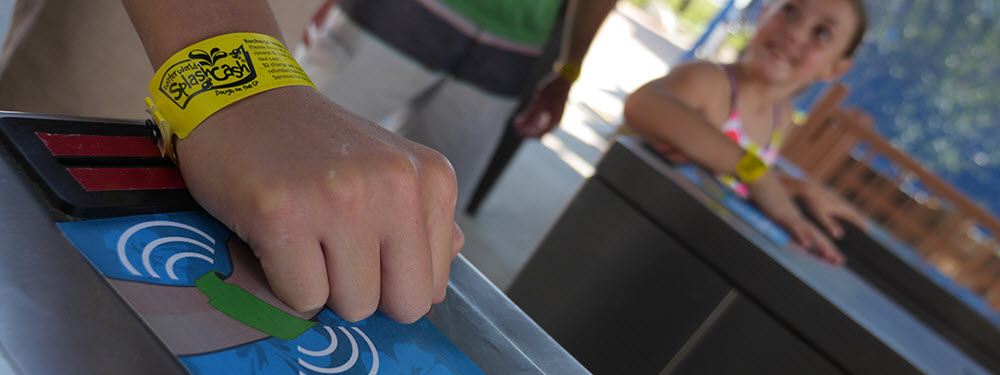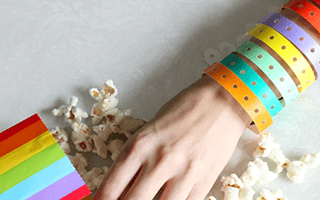Wristbands 101: Basic Understanding of Different Type of Wristbands

One of the most popular types is Tyvek. Wristbands made of Tyvek are economical—often only $.03 to $.05 per wristband. They're ideal for short-term use because they're not as strong or durable as plastic or vinyl. Tyvek wristbands are water-resistant and tear-resistant. They're made of Tyvek®, which is a synthetic fiber material produced by DuPont. They have a strong adhesive closure and “tamper cuts” that will cause the wristbands to shred if someone tries to remove it from the wearer.
Plastic wristbands are constructed of multi-layered, laminate plastic. They are extremely strong yet still lightweight and comfortable. They can last for several days or even weeks and are waterproof. That makes plastic wristbands a good option for hotels and camps because they can be worn for a long period without being replaced. Plastic wristbands also feature locking plastic snap closures which makes them nearly impossible to remove without scissors. This is a great security feature because it means the guests can't share the wristbands with someone else who hasn't paid or isn't authorized.
Another durable style of wristbands is vinyl. Vinyl wristbands are made of multiple layers of vinyl and available in a wide range of colors. Vinyl wristbands can last for days and weeks and are completely waterproof, making them a great choice for water parks, camps, and hotels. Some wristband companies even offer translucent vinyl wristbands for a cool look. They also have the locking snap closure which is a good security feature.
Silicone wristbands have been popular ever since the explosion of yellow “Live Strong” wristbands. There are plenty of companies selling silicone wristbands for fundraising and promotion, but many of the wristbands are manufactured in China. Silicone wristbands can be customized with debossed or embossed engraving or silkscreen printing. The main difference between custom silicone wristbands and the other types is that they are reusable, long-lasting, and removable. That's great when the wristband will be saved as a souvenir. But since wristbands are completely removable like a bracelet, they're not a good option for admission or access control because people can share them.
Wristband makers continue to introduce new styles of wristbands to meet the demand of the marketplace. A new product touted as the cleaner alternative to standard Tyvek wristbands is the Tytan Tabless™ Tyvek wristband. It offers a “no mess” design because the adhesive liner remains intact on the wristband. This helps keep a facility clean because they don't have thousands of loose tabs to deal with or clean up.
Bar code wristbands can be used as ID wristbands and feature bar codes that are tied into the venue's system to track admission and access. The staff simply scans the bar code and it may be linked to the guest's account to track and authorize cashless purchases or special access. Bar code technology helps venues streamline their operations through automation versus manual processing.
RFID wristbands are the most innovative style of wristband available. They have a microchip sealed inside the waterproof wristband that can be read and written to by RFID read/write devices. An RFID wristband system offers a wide range of applications. Common applications include keyless hotel room access, cashless POS, locker rental, cashless vending, and cashless arcade. RFID wristband systems are taking off in the water park and amusement park markets because they have been shown to improve the guest experience and increase in park spending.

 FREE GROUND SHIPPING OVER $99
FREE GROUND SHIPPING OVER $99
 SAFE AND SECURE
SAFE AND SECURE






Thanks for Sharing information.